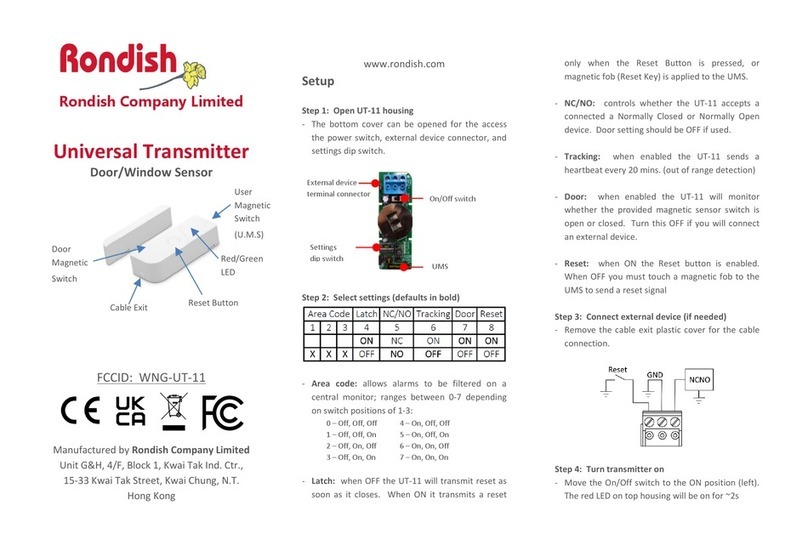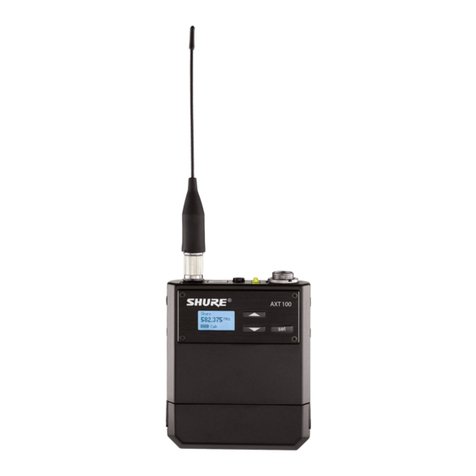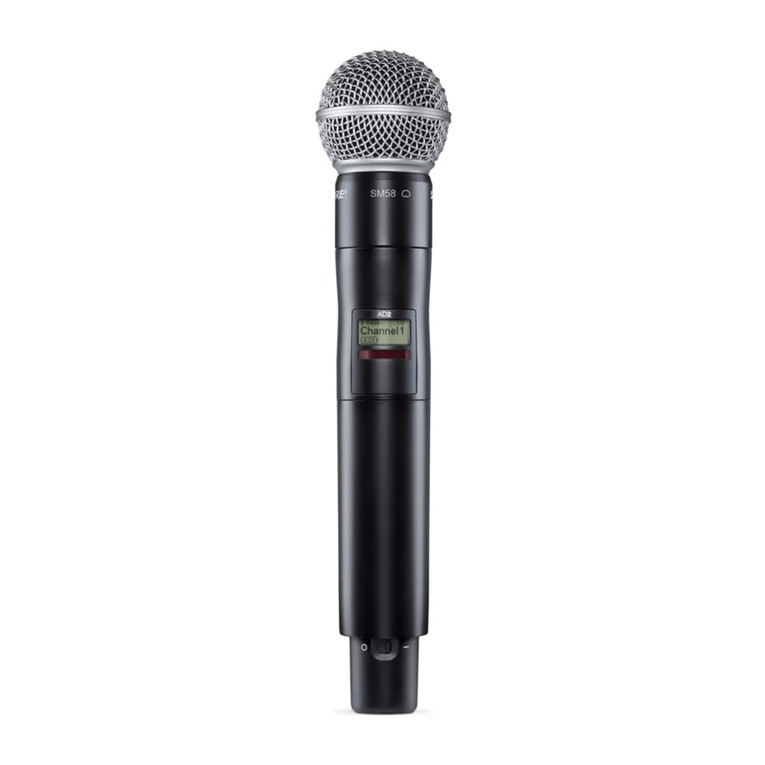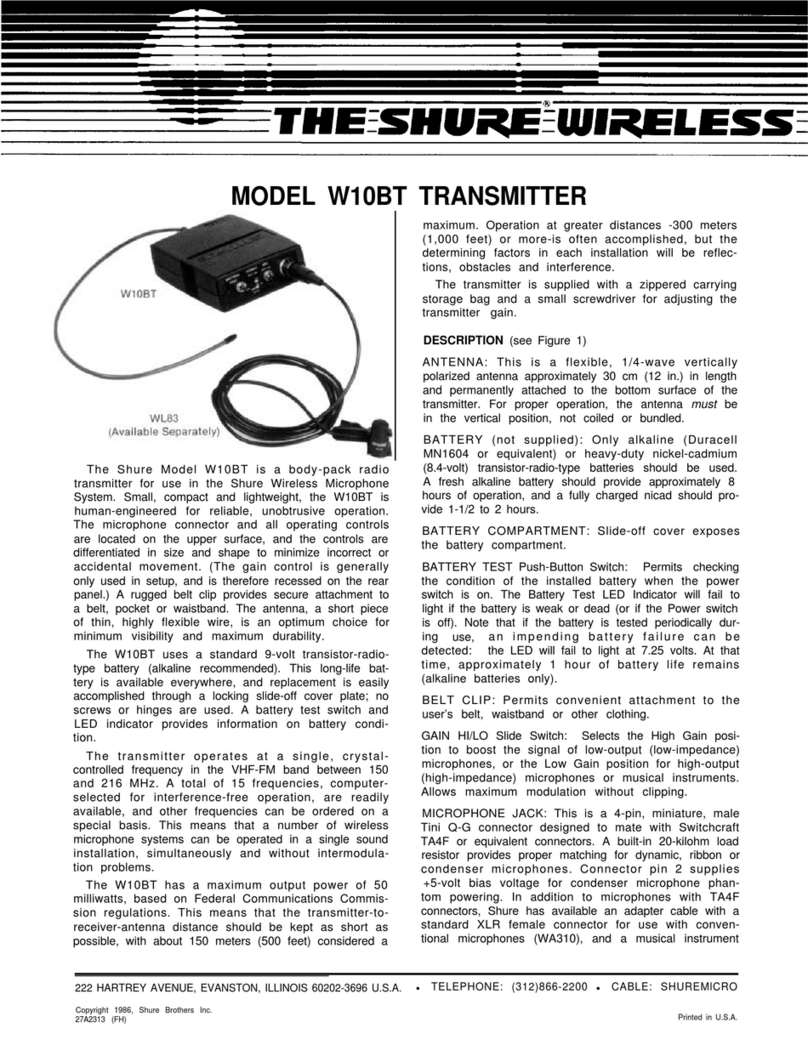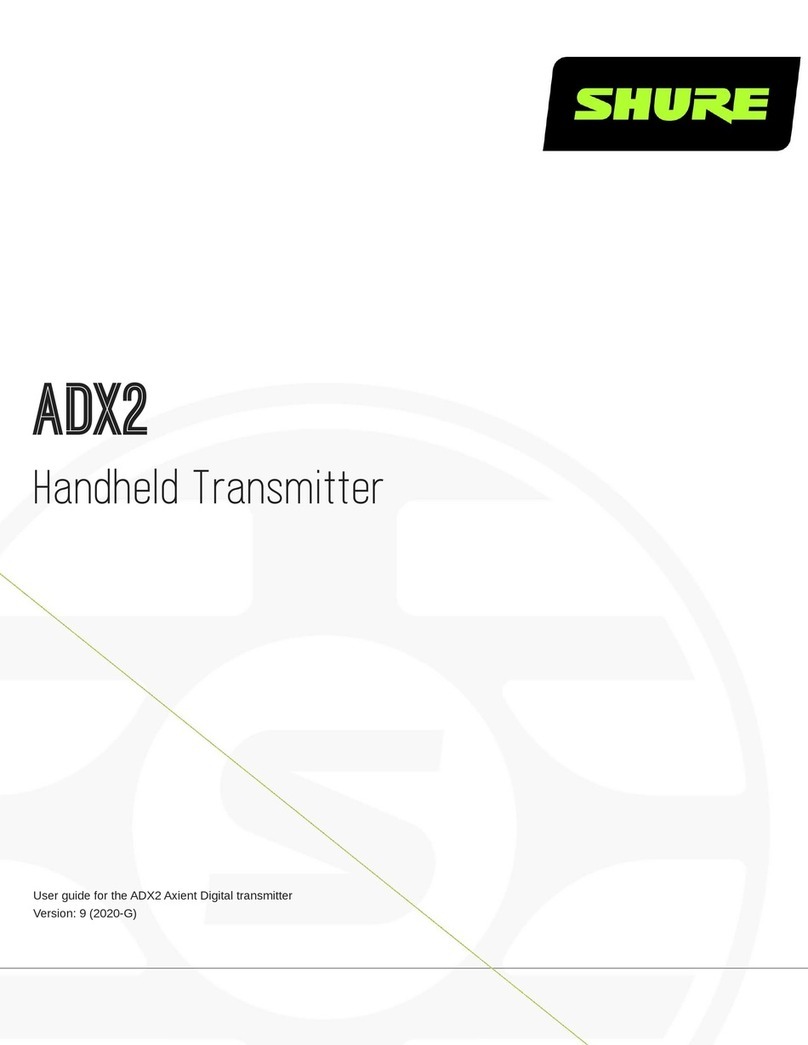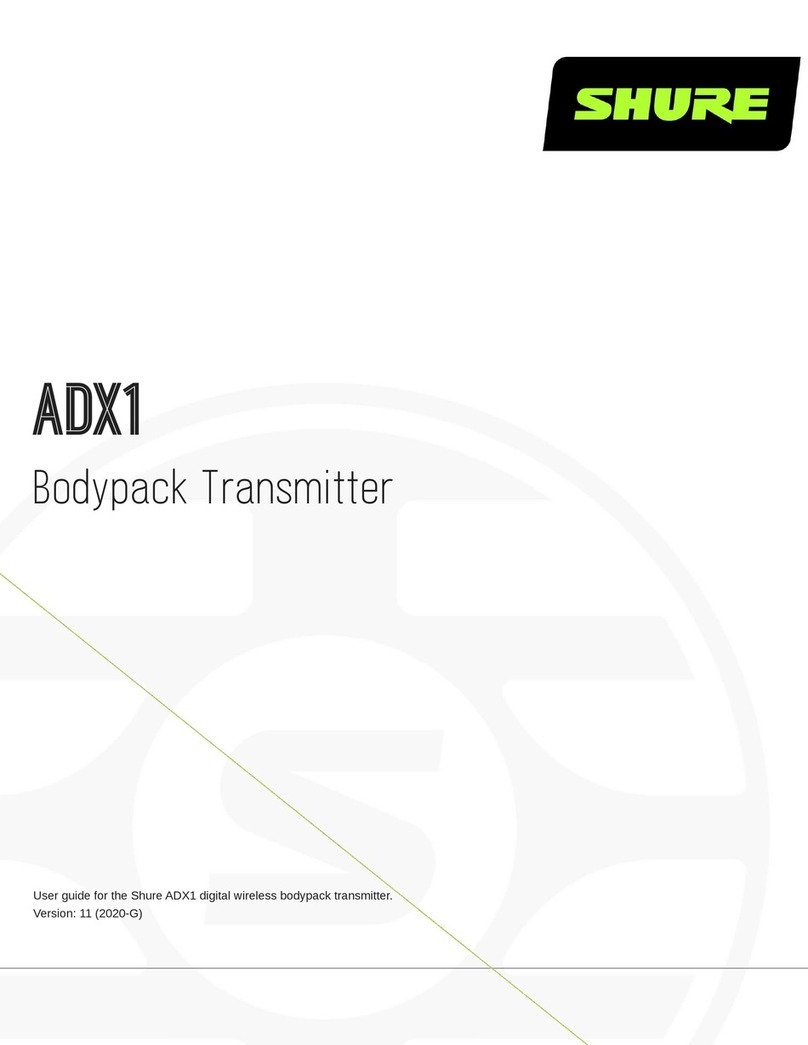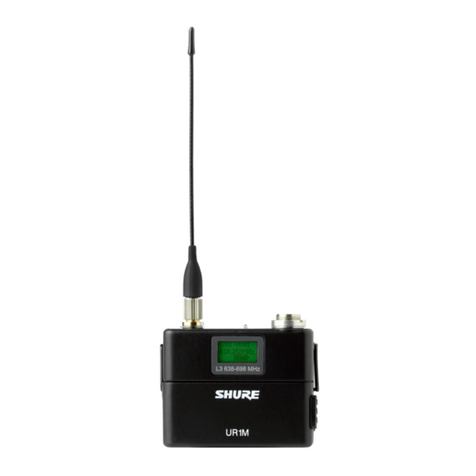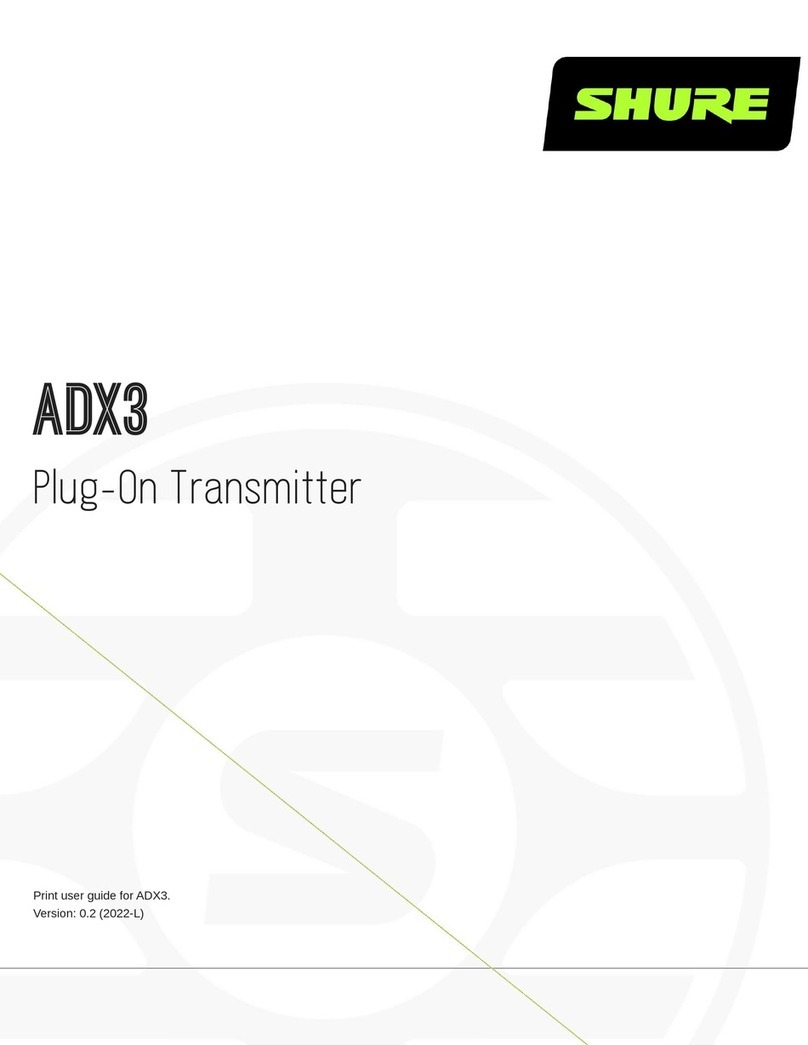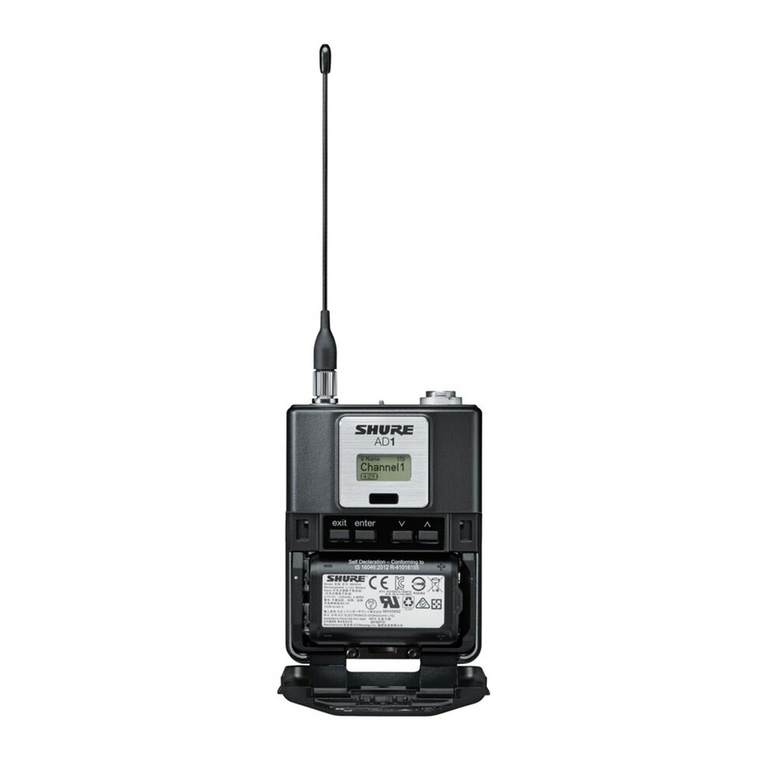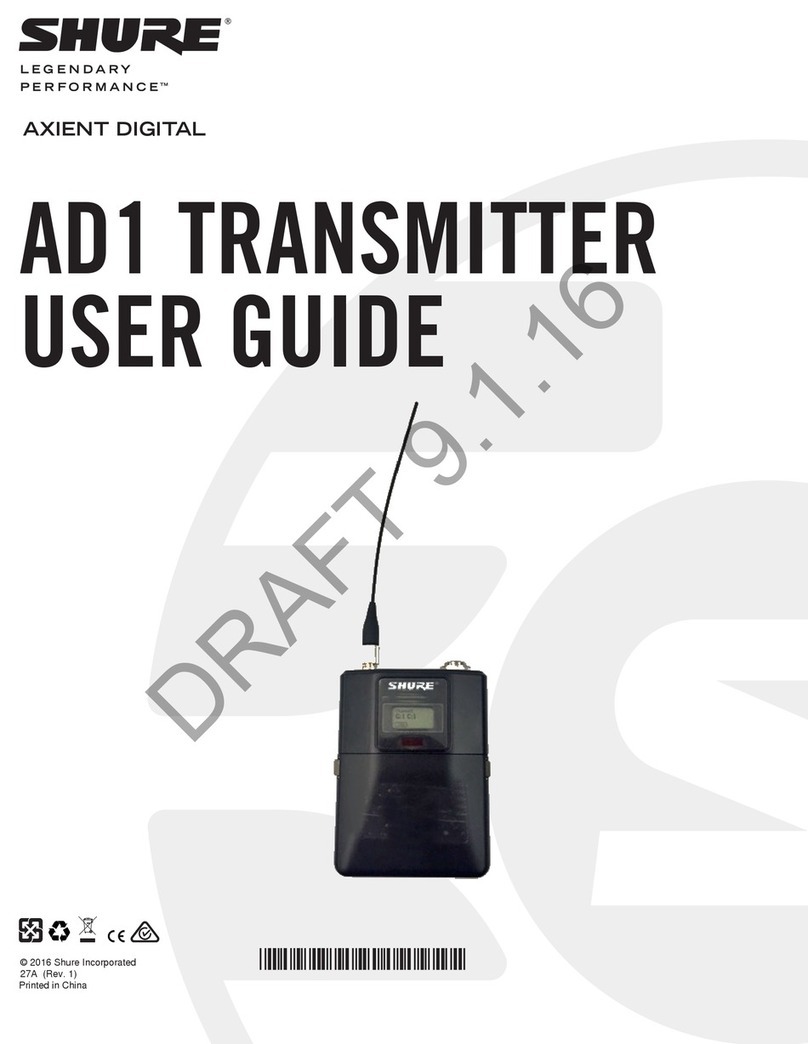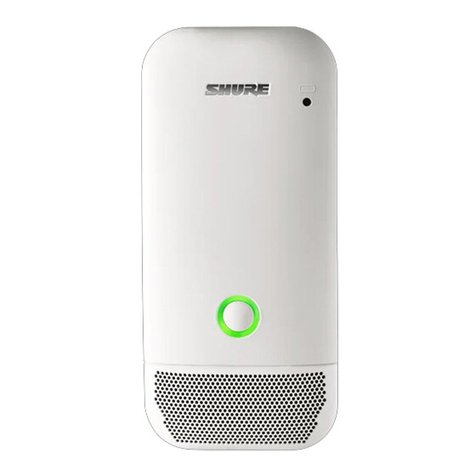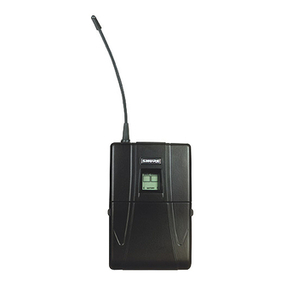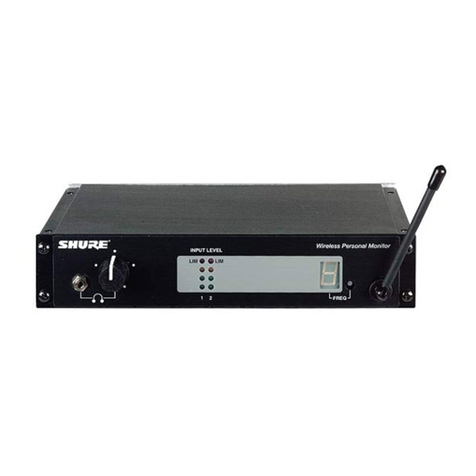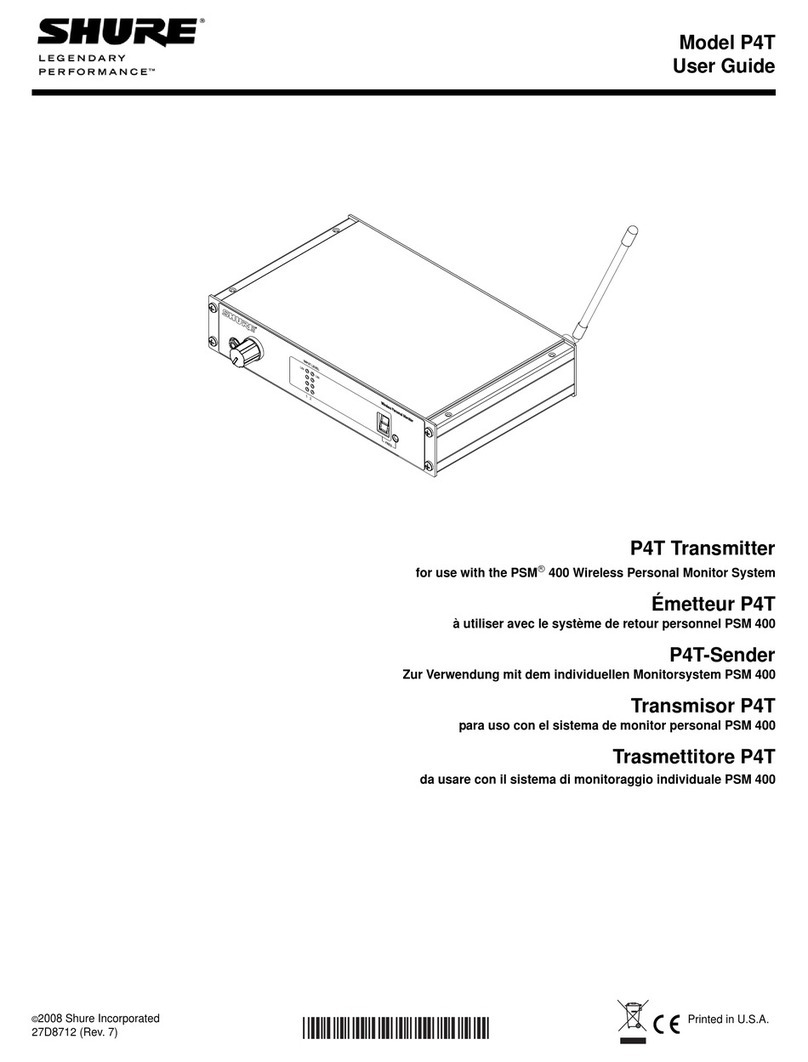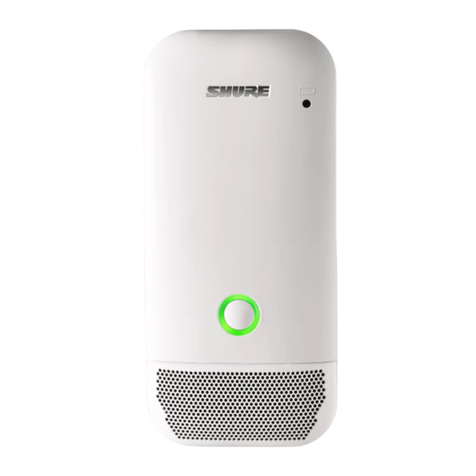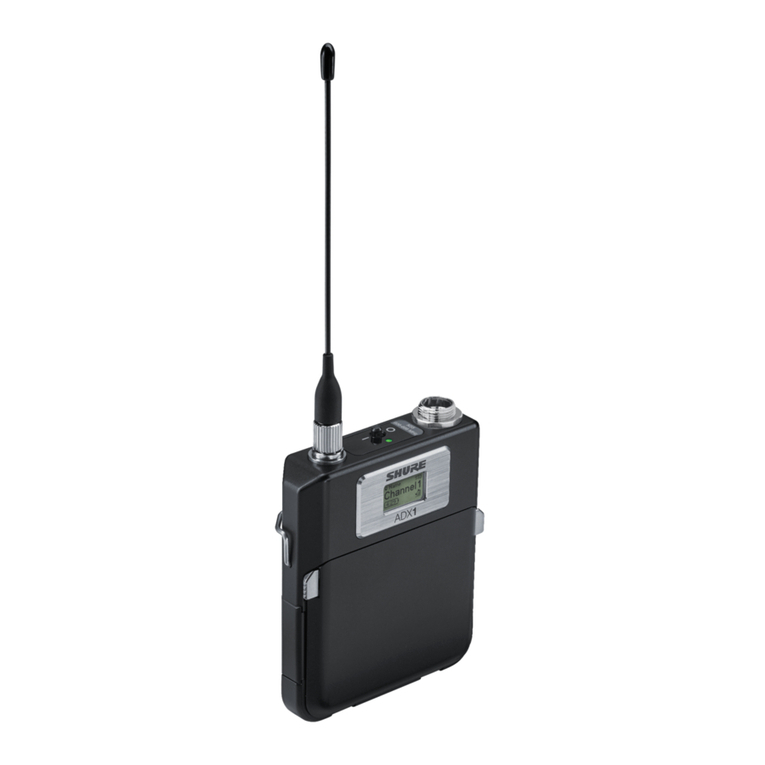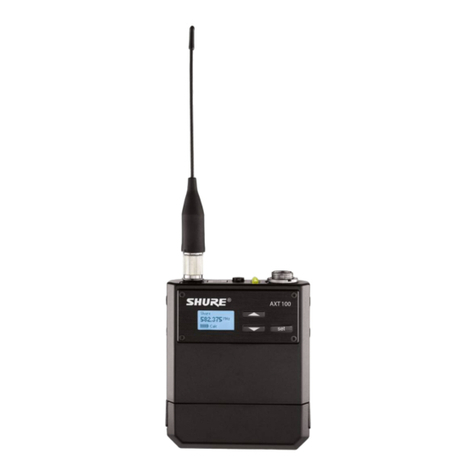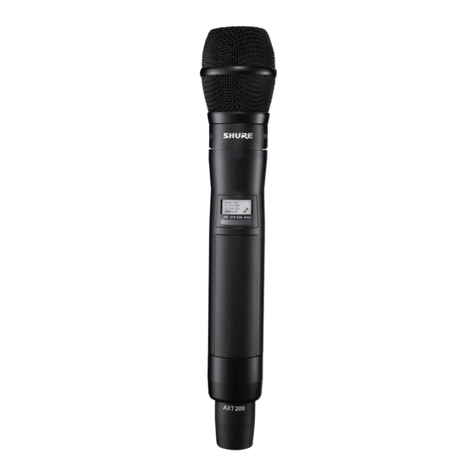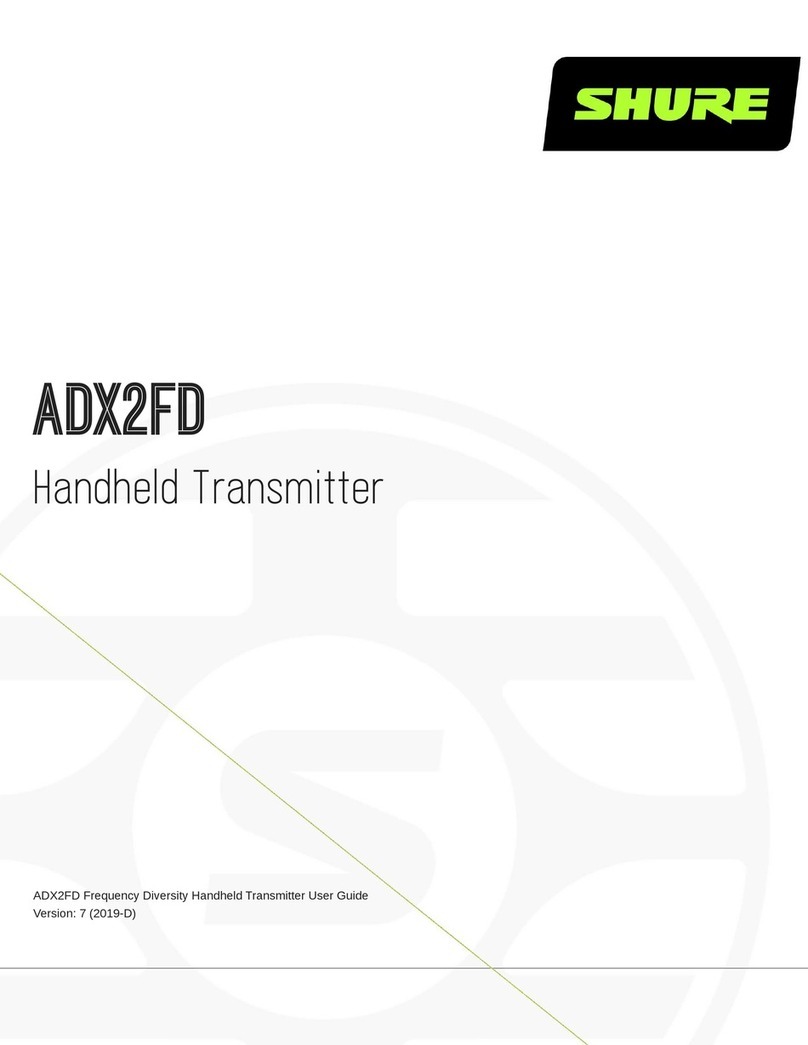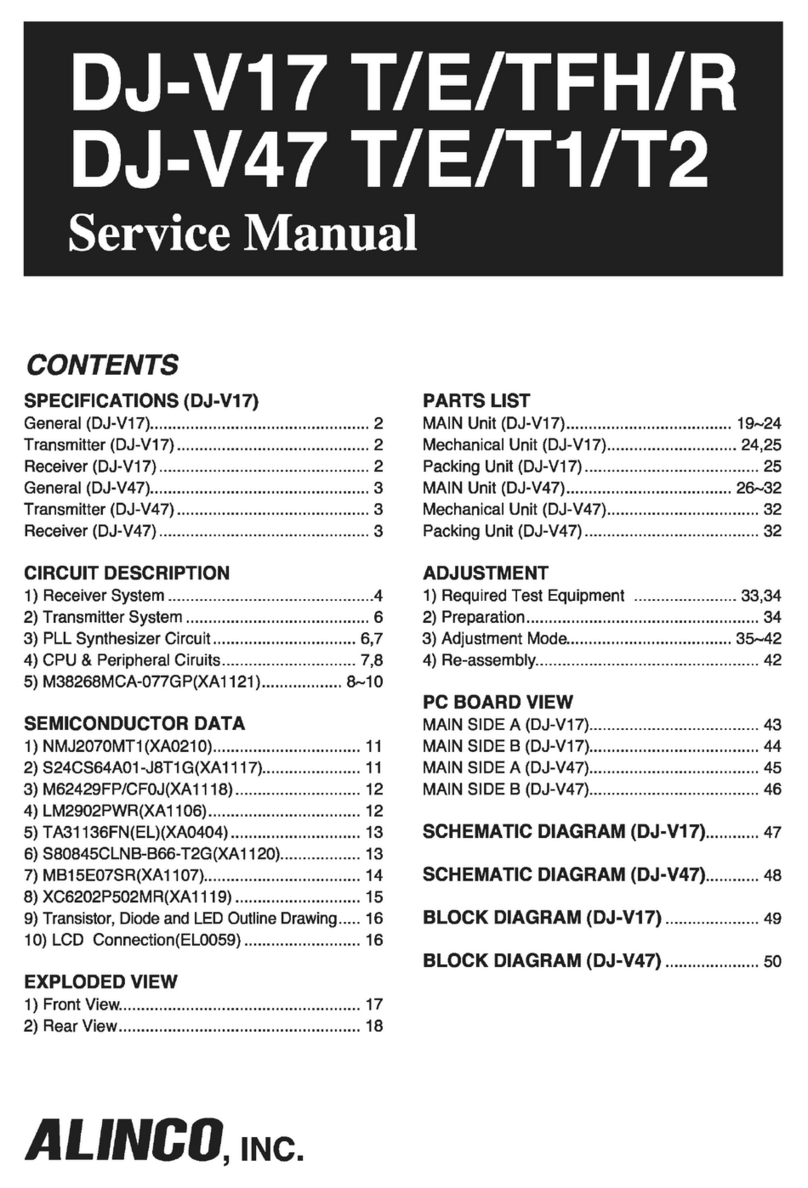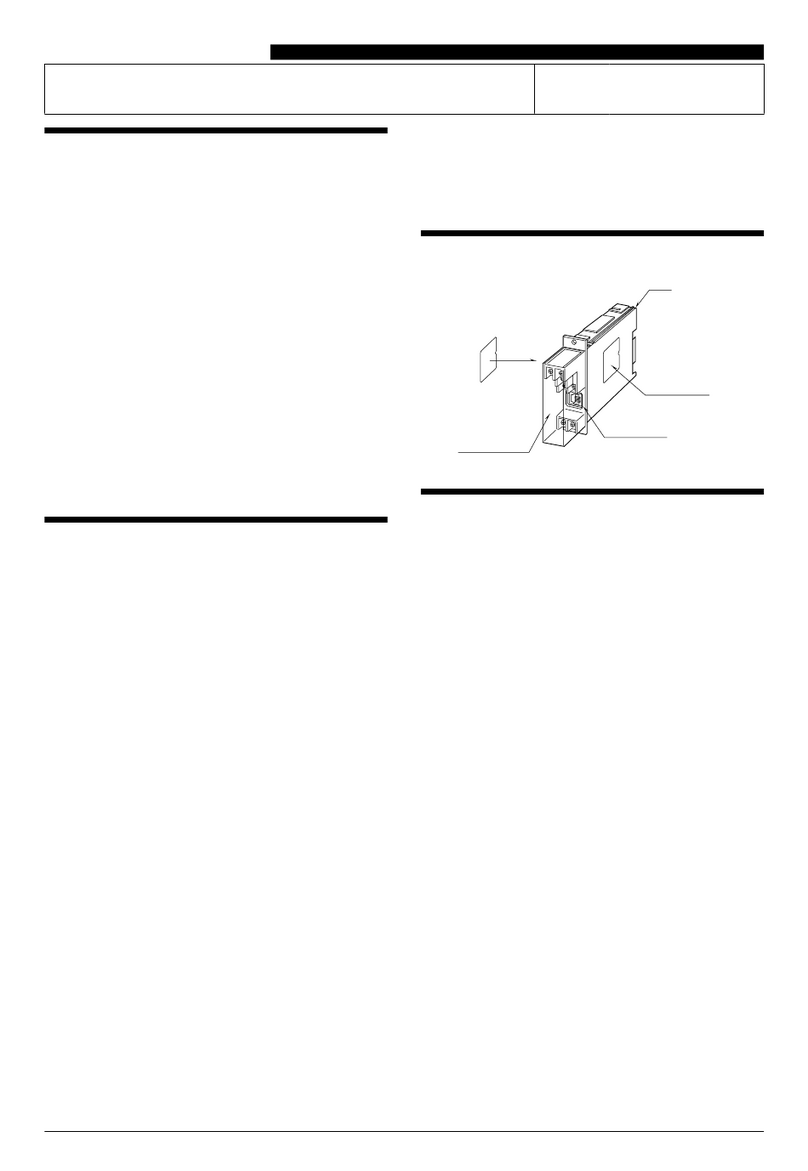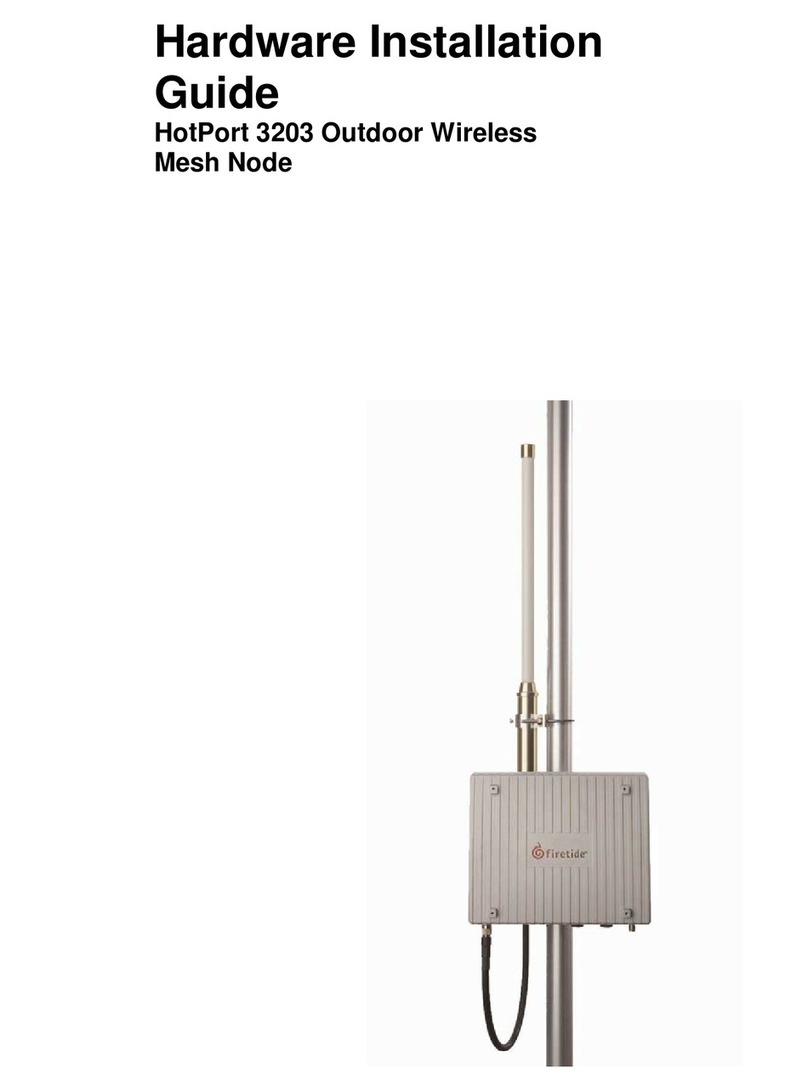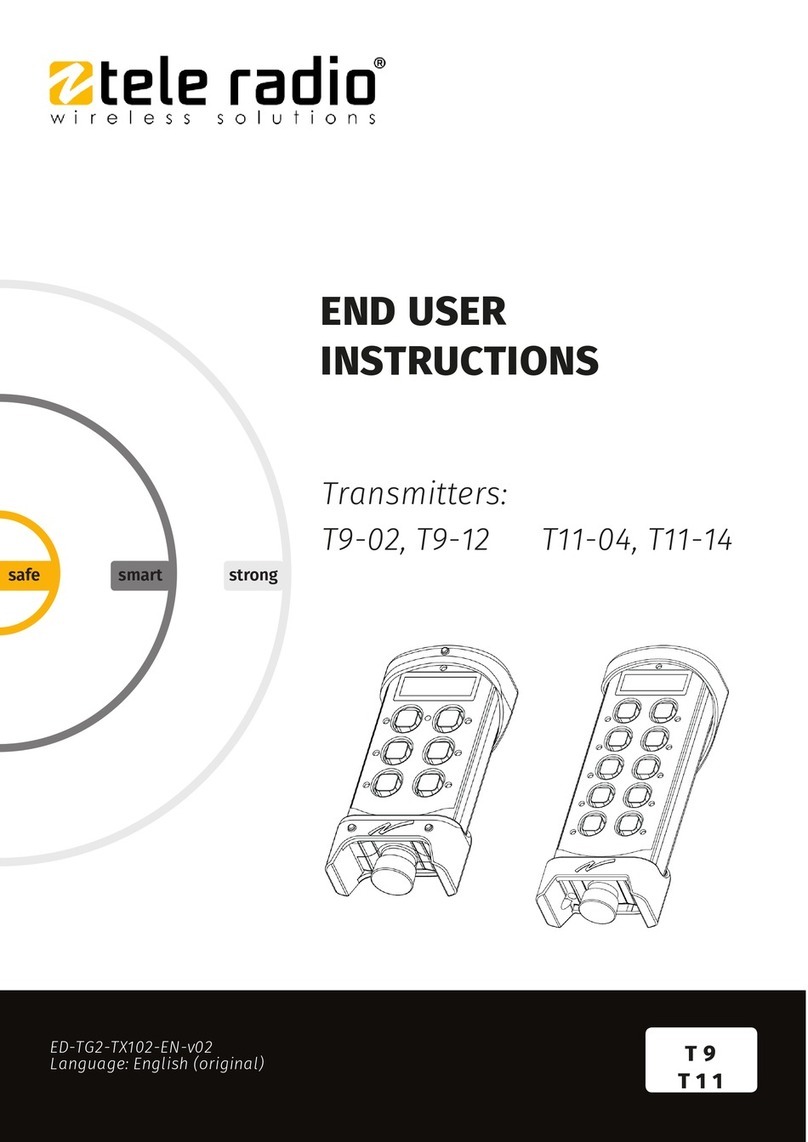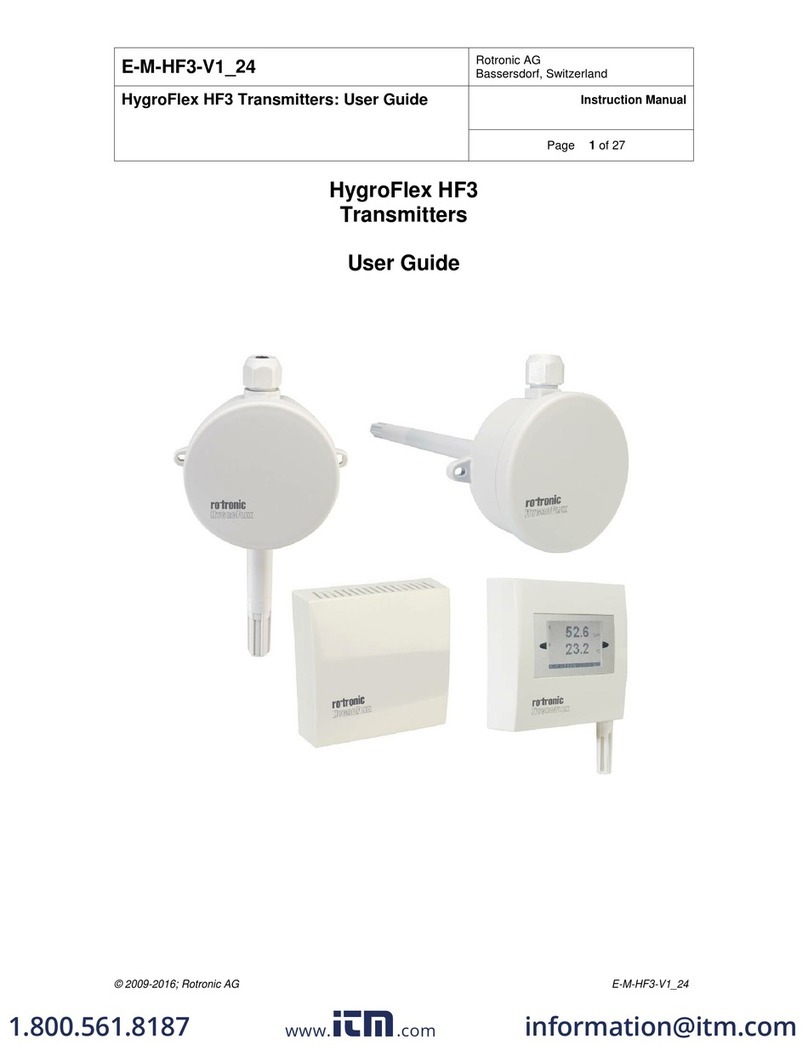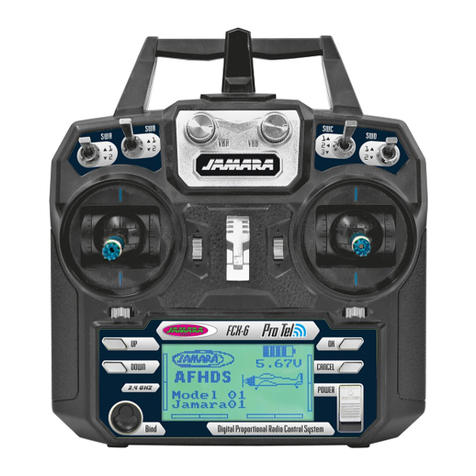
Shure UC2 Hand-Held UHF Transmitter
Characteristics
325A1044 (RI)
the amplifier and bias circuits from rf interference. Due to its topology,
this stage is unique because it is non-inverting and allows for a gain less
than unity.
Audio then enters a buffer to the pre-emphasis network and the
compression stage. R213, R214, and C211 set up two corners for the
pre-emphasis network. The pre-emphasis boosts the high frequencies
before transmission.
This network feeds an NE575 compander, U202, that utilizes an
external amplifier, U201B. The compander performs a 2:1 logarithmic
compression of the audio signal. The pre-emphasis network also plays
a role in setting the hinge point (0 dB gain) of the compander.
From the compressor, the processed audio enters a low-pass filter,
U201D, and then a summing amplifier, U201C. The tone key (and for
J frequencies, the call ID signal) is added here to the processed audio
signal.
Transistors Q208 and Q209, with crystal Y200, form the tone key
oscillator circuit to provide a stable, continuous 32.768 kHz sine wave.
Transistor Q210 buffers the tone key signal before it is added to the
audio signal.
The tone key signal is used in the receiver to provide audio output
only when the tone key signal is present with the transmitted signal. If
the tone key or the transmitter is turned off, the receiver will be muted.
The tone key squelch eliminates receiver noise associated with
loss of a carrier. Q211 acts as a switch for toggling the tone key MUTE/
UNMUTE; it is controlled via the microprocessor.
The tone key signal, along with the processed audio signal, is then
fed to a summing amplifier, U201C. R244, at the output of the summing
amplifier, helps prevent spurious oscillations from the op-amp. After
passing the ac coupling capacitor, C243, the signal is fed to the rf module
via the rf choke, L207.
The battery meter circuit is comprised of U205; LEDs D203, D204,
D205; and various resistors. The meter works by comparing a divided
down version of the battery voltage (R250, R251) to two thresholds
(set by R252, R253, and R254), and lighting the appropriate LED.
A 9 Vdc battery provides power to the audio printed circuit board
(pcb), via switch S200. FET Q203 provides electrical reverse battery
protection by connecting the negative battery terminal to the pcb ground
only when the battery is connected with the correct polarity.
The 9 Vdc then enters U203, a low dropout 5 V regulator, which
gives a clean, regulated 5 V supply to run the audio circuitry. The
regulator has appropriate bypass capacitors on its input and output.
Q201, Q202, Q212, Q213, and their respective resistors, provide
power management and timing.





